Introduction to Tea
Tea is one of the most popular beverages worldwide, with a rich history and diverse cultural significance. The world of tea encompasses a wide range of flavors, aromas, and textures, catering to various tastes and preferences. From the delicate floral notes of green tea to the robust, earthy flavors of black tea, there’s a type of tea for every palate. Understanding the different types of tea, including green tea, oolong tea, white tea, and black tea, can enhance one’s tea-drinking experience. Whether you’re a seasoned tea enthusiast or just starting your tea journey, exploring the various tea types and brewing methods can lead to a deeper appreciation of this ancient beverage.
Guide To Camellia Sinensis… All ‘true’ teas come from this simple tea plant
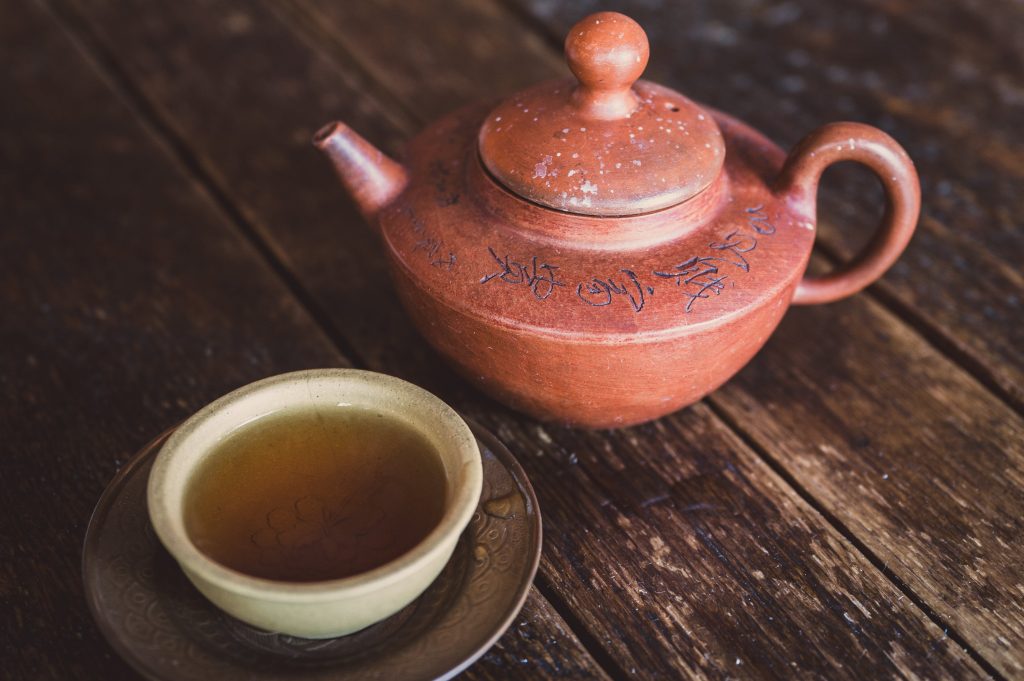
Photo by Brett Sayles on Pexels
To the tea enthusiast, ‘tea’ is any tea derived from the Camellia sinensis tea plant (no other herbal tea, teas or ’tisanes’ allowed). This simple tea bush gives us the second most widely consumed and enjoyed beverage in the world – our beloved tea.
True teas are made from the leaves of the plant with the scientific name Camellia sinensis, which distinguishes them from herbal tisanes that do not come from this plant.
And even more tea more, thanks to countless tea varieties and tea health benefits, teas from the tea plant are becoming more and more popular with a whole new generation of tea lovers worldwide.
What is Camellia sinensis?
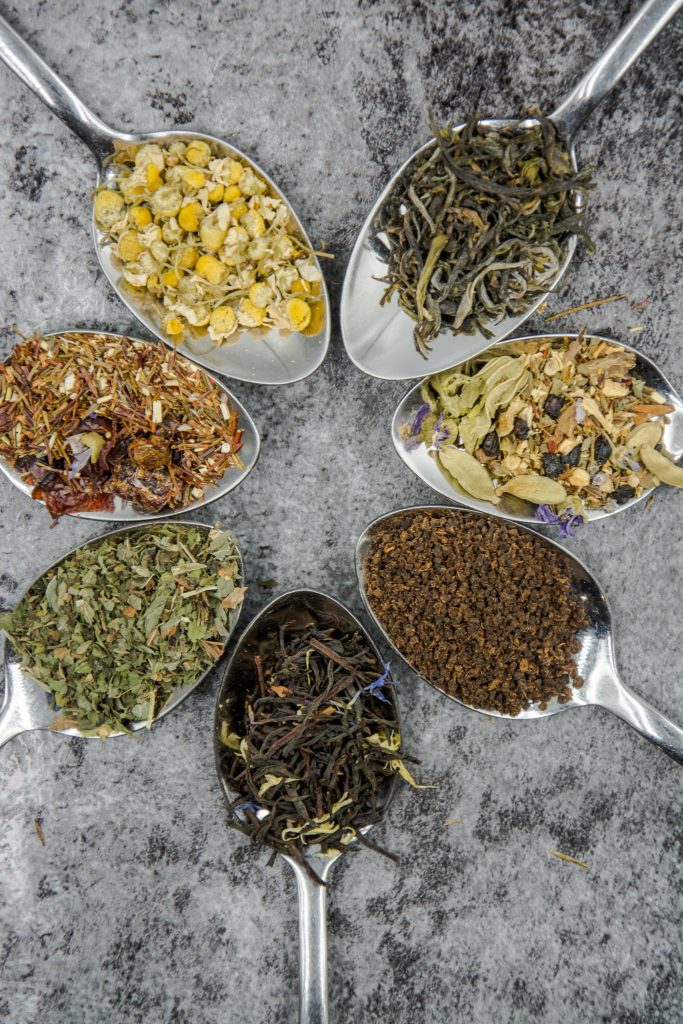
Photo by Alice Pasqual on Unsplash
Camellia sinensis is the Latin name for the tea plant, an evergreen bush or small tree found in tropical and sub-tropical locations around the world.
Its dark green, elongated leaves, which range from 1/4 inch to 10 inches in length, are used to make all ‘true’ teas – meaning black, green, pu-erh, yellow, oolong, and white teas. (The tea plant does have flowers and fruit, too, but only the leaves and young leaf shoots or buds are used to produce tea.)
The bud and first two or three leaves are preferred for tea – younger and lighter in color, they produce a finer quality tea. Green tea leaves are carefully selected for their quality, and are processed in different ways to create various types of green tea, each with unique flavors and characteristics.
All ‘True’ Teas come from the Tea Plant
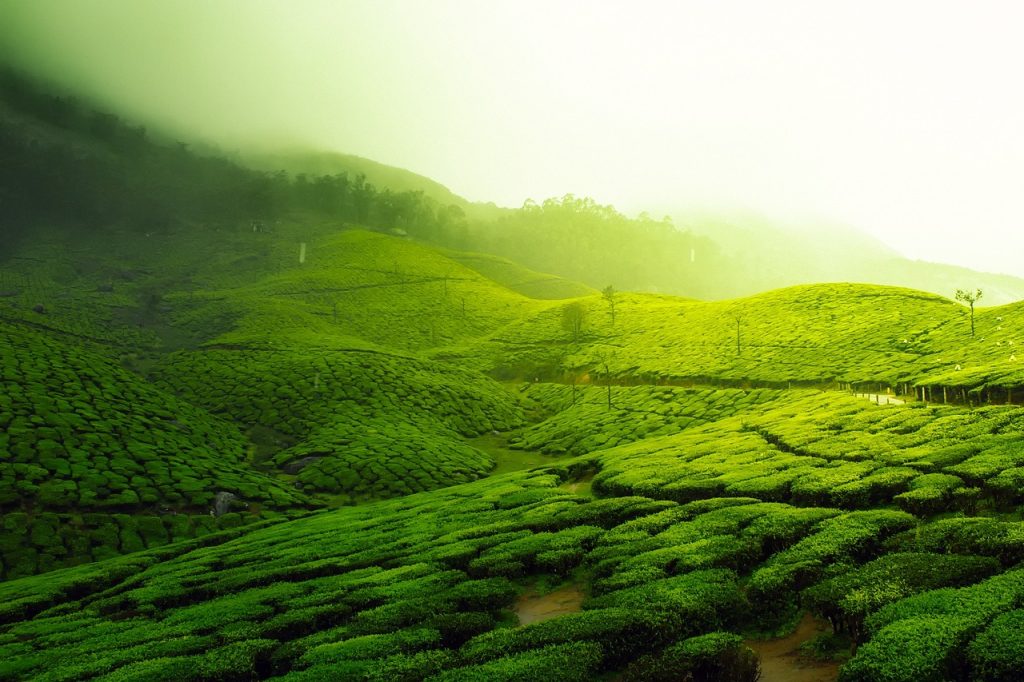
If you’ve tasted two or three (or more) of the different teas from the tea bush, it can be difficult to believe they all come from the same plant! In fact, when tea first made its way to the Western world, tea drinkers believed that black tea and green and black tea and even green and white teas of tea came from two distinct plants.
The secret behind the different tea types was protected for many years, but now we know that the tea plant is the source of the entire ‘true’ tea family. It’s what happens to the tea leaves and tea leaf buds after they are harvested (the processing steps) that determines which tea type is created.
In addition to single-origin teas, many tea blends are created by combining different types of tea leaves or adding flavors, further expanding the variety available to tea lovers.
Where does the Tea Plant Grow?

Photo by lucasgeorgewendt on Pixabay
The tea bush flourishes in hot, humid tropical and sub-tropical climates with rich soil and plenty of sun and rain. Tea plants thrive in higher elevations, as well. Although the tea plant grows more slowly in higher altitudes, the resulting tea is high quality and very flavorful.
From China and Japan to India and Africa to parts of South America and Indonesia, tea plantations and farms can be found in many countries around the world. Chinese green teas are especially renowned for their unique flavors and traditional production methods, setting them apart from other green teas. In fact, the first commercial tea farm has just been started in Canada!
Tea Map
The Tea World Map below shows the tea-producing countries around the world.
More about Camellia Sinensis, the Tea Plant
The tea plant (Camellia sinensis) gives us the entire ‘true’ tea family, including black, oolong, pu-erh, green, yellow, and white teas. From this simple bush comes the second most widely consumed beverage in the world – tea – with its multitude of flavors and a host of health and wellness benefits!
Some of the best teas in the world, celebrated for their exceptional quality and flavor, are produced from the Camellia sinensis plant.
Tea Plant Varieties

Photo by Alice Pasqual on Unsplash
Two main varieties of Camellia sinensis give us the gift of tea – the Chinese tea bush (which is the ‘sinensis’ variety) and the Assam tea bush (the ‘assamica’ variety).
The Chinese tea bush is a hardy bush that can weather colder temperatures and drought. It is known for its long, productive lifespan – some of these bushes have been known to produce tea for 100 years or more!
The Chinese tea bush, which can grow to a height of 20 feet (6 m), was first discovered in the Yunnan province in China (that’s why it’s called the ‘Chinese’ tea plant), but now it can be found in other countries, as well, including Japan, Turkey, and Iran.
The Assam tea tree isn’t as hardy as the Chinese variety – it can’t survive frost and drought, but it does love heavy rains and monsoon-type conditions! Left to its own devices, this plant can reach a height of 100 feet (30 m) or more. Its name tells us where it was first discovered – in Assam in northern India – but now it is cultivated in Africa and Sri Lanka, as well.
After years of natural hybridization and planned cultivated varieties (which are called ‘cultivars’), many hybrids of these two tea bush varieties exist. These hybrids contribute to the wide variety of tea flavors and aromas you’ll find in your favorite online or local tea shop. The diversity of tea plant varieties and hybrids allows tea lovers to discover their favorite teas among a vast array of flavors and aromas.
Tea Gardens and Estates
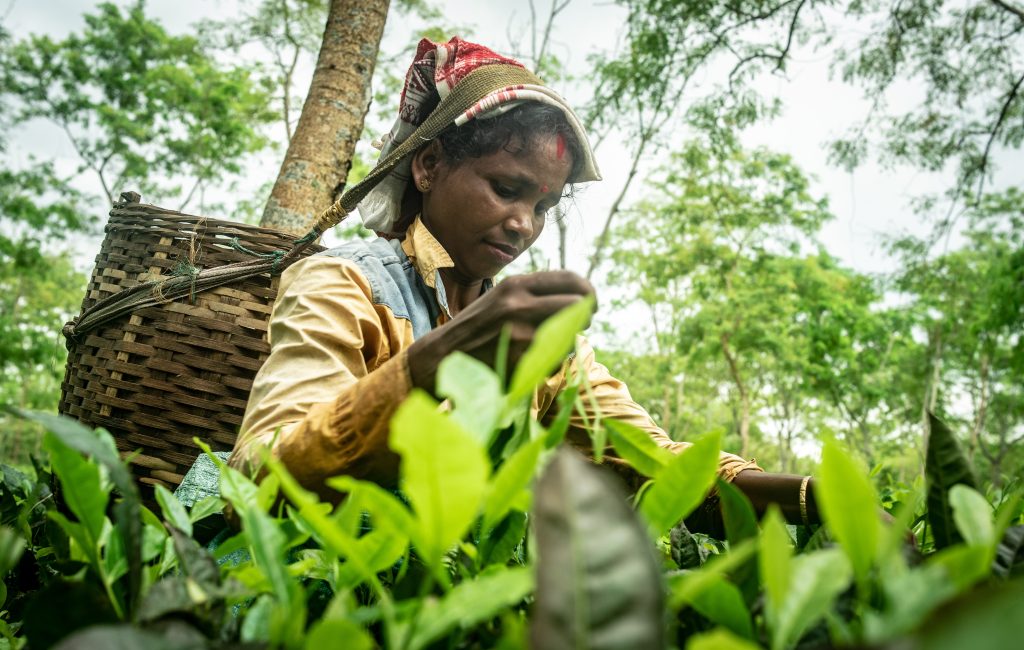
Photo by Alejandro Rugama on Unsplash
It’s not only the variety of Camellia sinensis that affects the taste of your tea – the tea garden or estate where your tea was produced, with its unique location, soil, altitude, climate, and harvest time and methods, will also place its mark on the flavor, fragrance, and quality of your tea.
Tea estates (also called tea gardens, tea plantations, or tea farms) are found in tropical and sub-tropical climates on five continents. In China, Japan, India, Sri Lanka, Kenya, Argentina, and many more countries – these exotic locales grow wonderful, unique teas for tea lovers.
Tea gardens vary greatly in size – ranging from a few to many thousand acres.
In the wild, Camellia sinensis can grow to a height of 100 feet or more. On tea farms, where the plants are cultivated for tea production, they are pruned for easier harvesting and to stimulate new growth. Depending on the climate, some tea farms have year-round growth, and tea leaves are harvested at regular intervals. Other tea estates have a specific growing season and harvest only during those months.
During harvest, skilled pickers (usually women, with their delicate, sensitive fingers) pluck the tea leaves and buds and place them in baskets or bags. In some areas, mechanical harvesting methods are used, but these are less precise than hand picking, not as useful for hilly terrain, and can detrimentally affect the quality of the tea.
In many traditional tea estates, it is customary to pour hot water over teaware before brewing to enhance the tea-drinking experience.
Types of Tea from the Tea Plant
Each of the different types of tea from the Camellia sinensis tea plant – black, oolong, green, pu-erh, yellow, and white tea – has a distinctive flavor, aroma, and appearance.
Some teas, such as white and certain oolong varieties, are prized for their light body, which contributes to a delicate and refreshing tasting experience.
Many factors influence the taste, fragrance, and quality of tea… the variety of tea plant, the tea plantation with its unique climate and soil, whether the harvesting was manual or mechanical, even the harvest season.
And, of course, the tea processing method affects tea’s taste and aroma.
Once tea leaves have been picked, those earmarked for a specific type of tea will be processed in a certain way, resulting in the lovely, delicious tea product you find in your favorite online store or local market.
Tea Processing Methods for Different Types of Tea
Immediately following harvest, the tea leaves and buds are processed into the tea bags. All ‘true’ teas originate from the leaves and leaf buds of Camellia sinensis – it’s what happens after the leaves and buds are plucked that determines which of these different tea types is produced.
Special care is taken during processing to preserve the subtle flavors and aromas of delicate teas, ensuring their unique characteristics are maintained.
White Tea
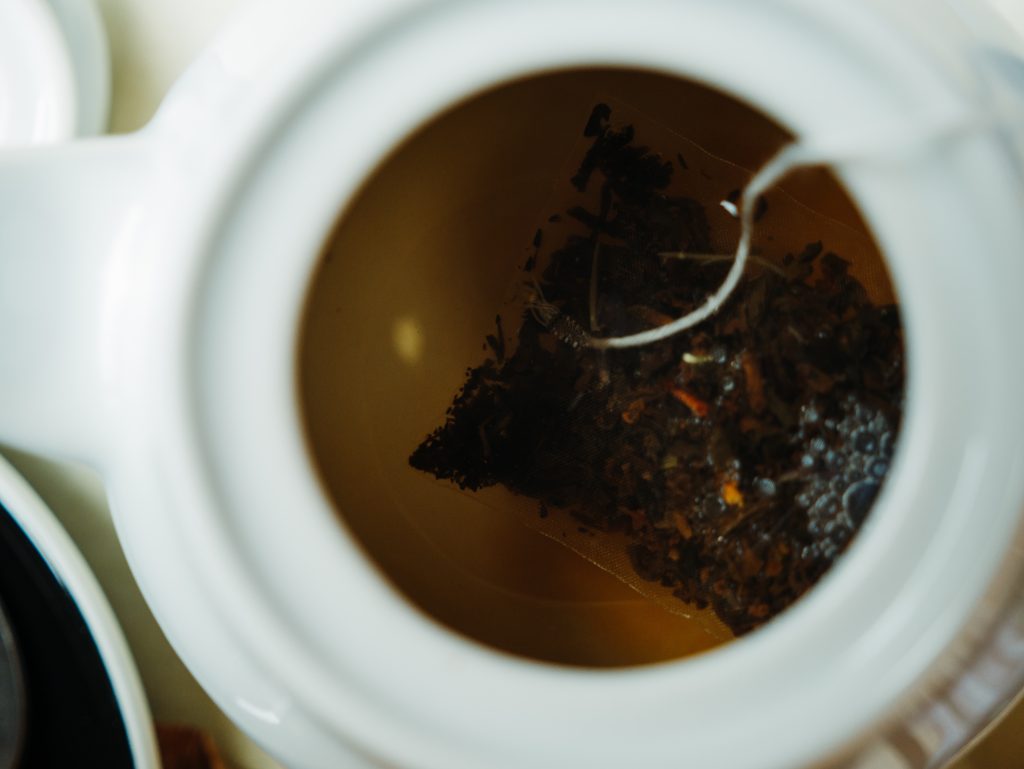
Photo by Matt Seymour on Unsplash
White tea has the least processing of all teas. After picking, buds and leaves intended for white tea are simply withered and then dried. White tea is especially appreciated for its milder taste compared to more oxidized teas, offering a gentle and delicate flavor profile.
Some high-quality white tea (such as Silver Needles) is made entirely from the tender leaf buds, while other white teas include the first young leaves of the tea plant, as well.
Green Tea
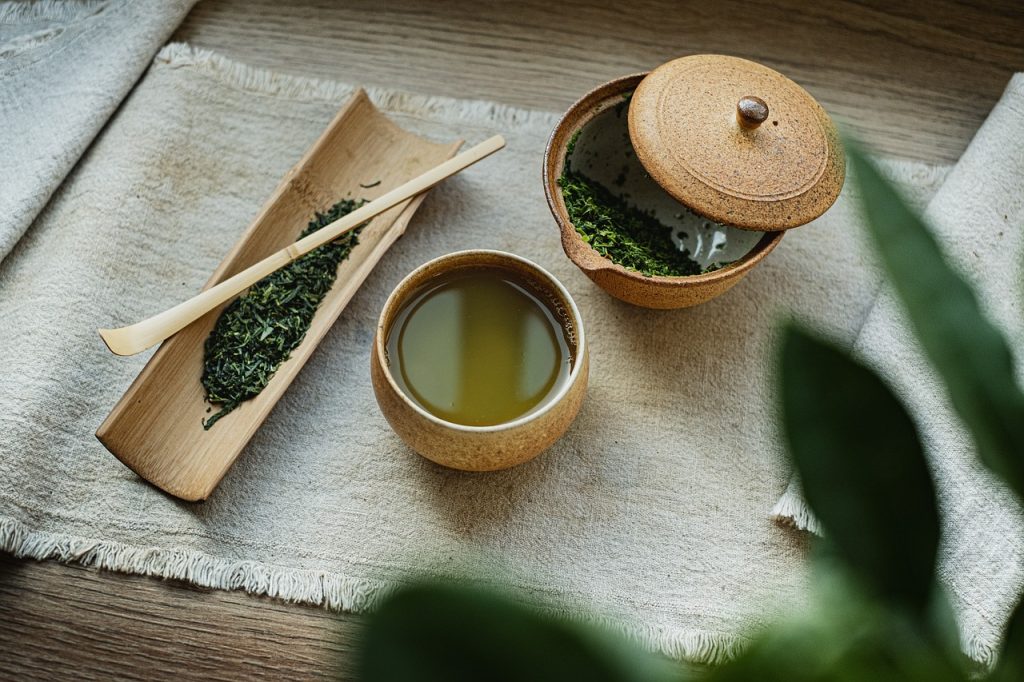
Photo by mirkostoedter on Pixabay
Green tea is also known as ‘unfermented tea,’ which means this tea does not go through an oxidation step.
Japanese green teas, such as Sencha and Matcha, are known for their distinctive processing methods, including steaming and shading, which contribute to their unique flavor profiles and cultural significance.
Freshly picked tea leaves earmarked for green tea are briefly heated or steamed to prevent any oxidation or fermentation before brewing loose leaf tea. Some green teas, like Genmaicha, have a slightly nutty flavor due to the addition of roasted rice, which gives them a delicate and balanced taste. After rolling and drying loose leaf tea out, the tea is ready for grading and packaging.
Yellow Tea
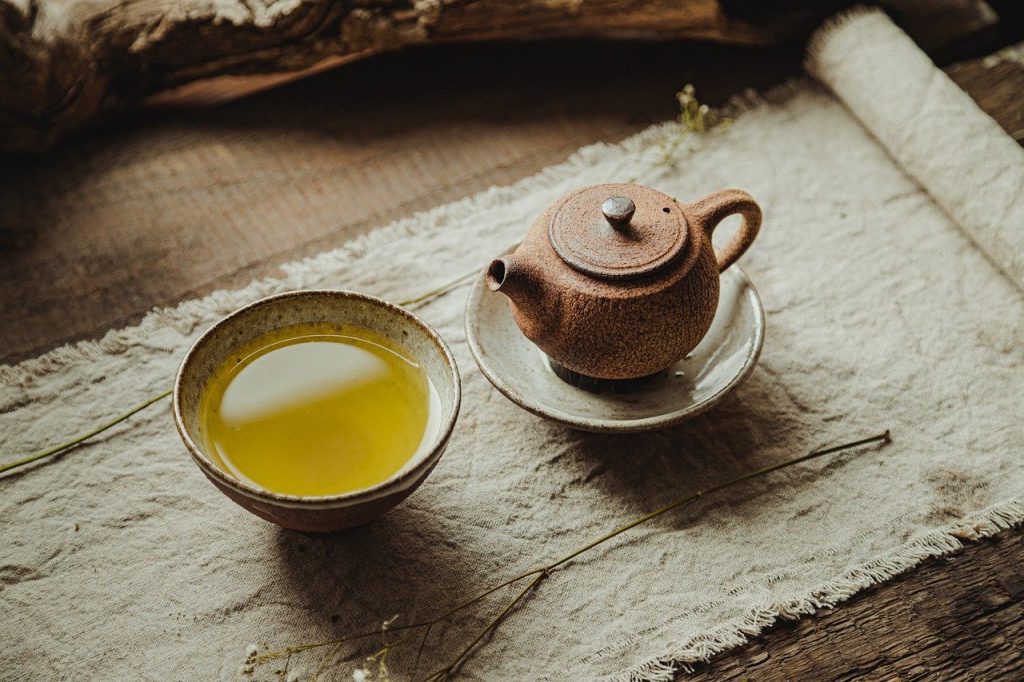
Photo by mirkostoedter on Pixabay
Yellow tea begins with heating and gently rolling the harvested tea leaves. The leaves are then wrapped in cloth or paper and allowed to rest and oxidize.They may be reheated and rewrapped at set intervals for up to three days, and allowed to cool and continue to oxidize slowly. Then, the tea leaves are dried.
Processing yellow tea is time- and work-intensive, resulting in a rare, costly tea. To fully appreciate its delicate flavors and avoid bitterness, yellow tea should be brewed at a precise brewing temperature.
Pu-Erh Tea
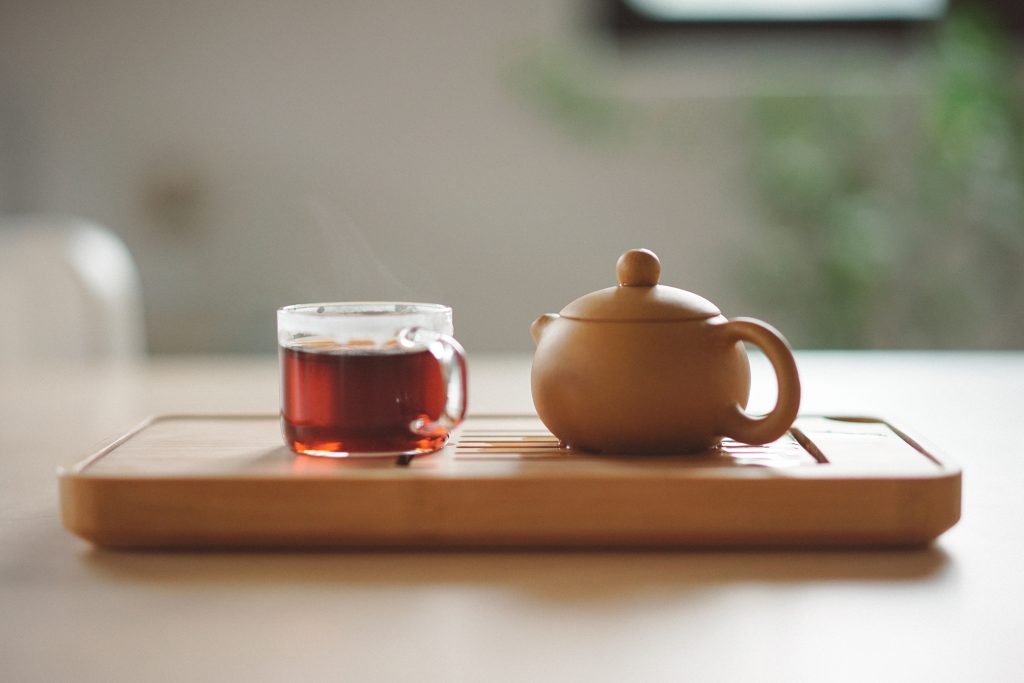
Photo by Manki Kim on Unsplash
Pu-erh tea is available either as loose tea leaves or in compressed shapes.
Tea leaves intended for pu-erh tea are first dried in the sun. Then, in one processing method, the leaves are softened and compressed into cakes, bricks, or other shapes.
After drying, the cakes are stored and aged over a period of years to encourage natural oxidation and a rich, deep flavor. This aging process develops a rich flavor that is highly prized by tea connoisseurs.
In the alternate processing method, additional heat and humidity are applied to the dried leaves to speed up the oxidation process. After drying, the leaves are sold loose or compressed into various shapes.
Oolong Tea
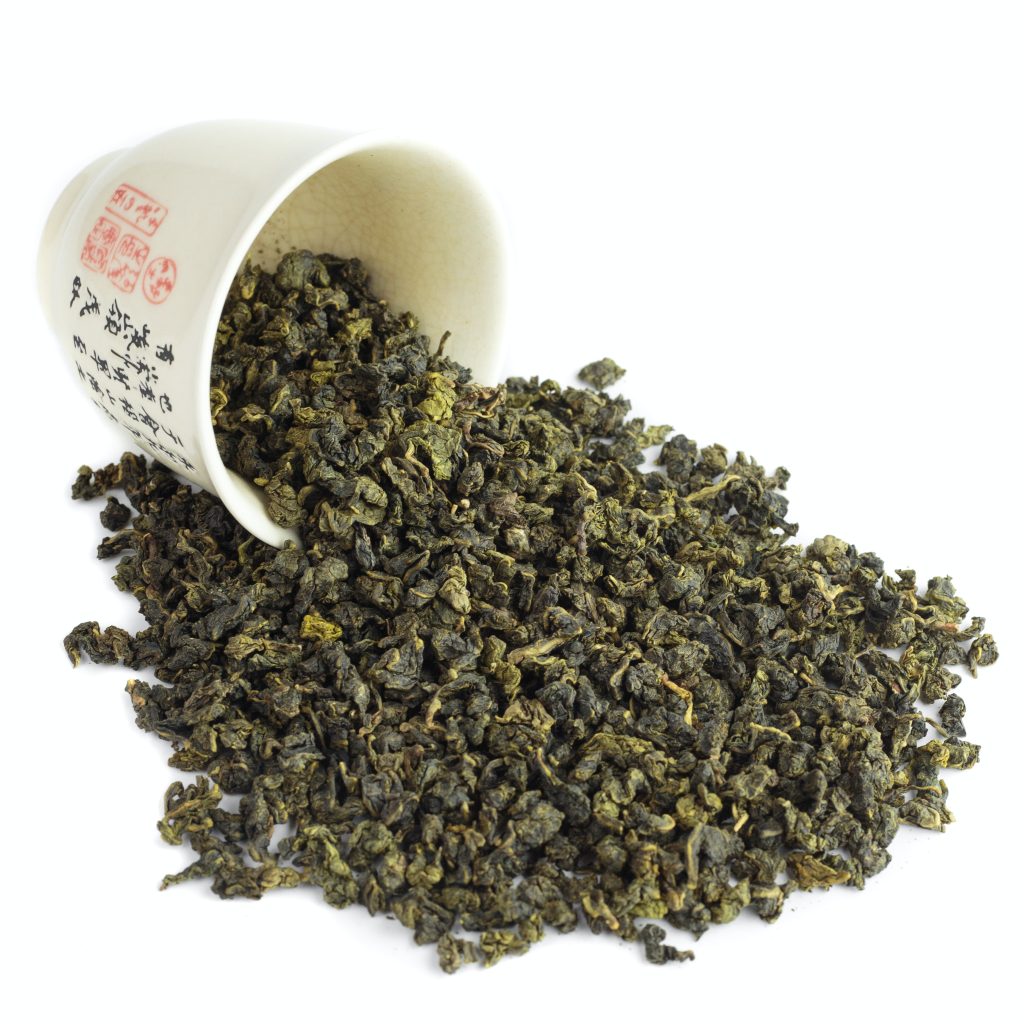
Photo by petr sidorov on Unsplash
Oolong tea is also called ‘semi-oxidized’ or ‘blue-green’ tea. For oolong tea, tea leaves are withered, shaken or ‘bruised’ gently, and then oxidized.
Oolong tea has anywhere from 10 to 70% oxidation – the longer the oxidation, the darker the leaves and the resulting infused tea.
Finally, the leaves are heated to stop the oxidation process and decomposition of the leaves.
Certain oolong teas are appreciated for their earthy notes, which add depth to their complex flavor profiles.
Black Tea
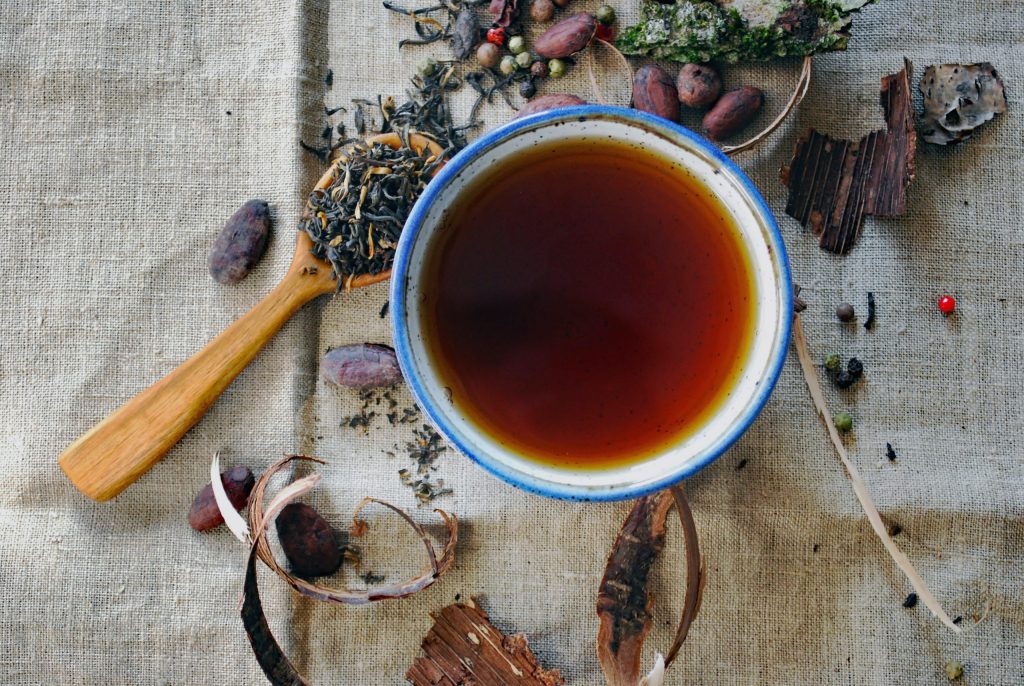
Photo by Drew Jemmett on Unsplash
Black tea processing involves four steps – withering, rolling, oxidizing, and firing.
Black teas tend to have bold flavors and higher caffeine content, with regional variations influencing their taste profiles.
Once the tea leaves are wilted, they are rolled or crushed lightly, fully oxidized, and then fired or heated to stop the oxidation process – and the result is the richly colored, highly flavorful tea we know and love. Black tea is best brewed with boiling water to fully extract its robust flavors.
After processing, any tea allocated for flavored, scented, or fruit teas will be enhanced with flowers, fruit, or spices, such as jasmine, rose, or lemon. Don’t confuse these other flavored teas or scented teas with herbal teas or tisanes, which are made delicate tea made from plants other than Camellia sinensis.
Once the different types of tea have been sorted, graded, and packaged, they will wend their way to your favorite online or local specialty tea shop or the shelves of your local grocery store – a world away from the Camellia sinensis plant and the tea plantation that provided the fragrant, delicious beverage in your teacup!
Herbal Tea
Herbal teas, also known as herbal infusions or tisanes, are not technically teas as they do not come from the Camellia sinensis plant. Instead, herbal teas are made from the leaves, flowers, roots, or fruits of other plants, offering a caffeine-free alternative to traditional teas. Popular herbal teas include peppermint, chamomile, and hibiscus, each with its unique flavor profile and potential health benefits. Herbal teas can be enjoyed hot or iced, sweetened or unsweetened, and are often used for their medicinal properties, such as promoting relaxation or aiding digestion. With their natural sweetness and soothing effects, herbal teas have become a staple in many tea drinkers’ routines.
Nurture Your Body, Mind, and Spirit with Tea from Camellia Sinensis
Teas from the tea plant (Camellia sinensis) provide a host of health and wellness benefits.
As we become more health-conscious and concerned about aging, healthful, natural alternatives (such as regular consumption of tea) make their way into more and more of our daily health routines and diets.
And, research and traditional wisdom tell us that the entire tea family is good for our health. Whichever tea type you choose – black, oolong, pu-erh, green, or white – your health will benefit! What better way to nurture your physical, emotional, and mental health than with a soothing, healthy cup of tea?
For those seeking a caffeine-free option, rooibos tea is naturally caffeine free and offers its own health benefits.
Health Benefits of Camellia Sinensis Teas
All teas from the Camellia sinensistea plant provide certain health and wellness benefits – all are filled with powerful antioxidants, provide a boost of caffeine, offer powerful nutrients, are hydrating, and are delicious and comforting!
Each of these green and black teas also has its own individual strengths, as well. Here is what scientific research is telling us about the many ways the teas from the tea plant work for our good health.
While herbal tisanes are not made from Camellia sinensis, they also offer unique health benefits and are enjoyed by many for their soothing properties.
Black Tea Benefits
Black tea is good for us in so many ways. Rich in antioxidants, black tea supports cardiovascular health, prevents dental plaque build-up (and bad breath), and provides protection against heart disease, diabetes, cancer, and other chronic diseases. Black tea can also help lower high blood pressure levels.
Research tells us as well that black tea can help you recover more quickly after exercise and reduce post-workout muscle soreness.
Feeling stressed or overloaded? Drinking black tea lowers your cortisol levels (a.k.a. the ‘stress’ hormone) and can help you de-stress more quickly after a bad day or stressful event.
Learn more about the many benefits of drinking black tea here
Oolong Tea Benefits
If you’re new to the world of tea, you may not be familiar with oolong tea – but this healthy, delicious tea is worth a try!
Drink oolong tea for heart health, to lower high blood pressure, and to keep your bones strong and dense. Oolong tea can also improve dental health, providing protection against cavities, dental plaque, and tooth decay.
In traditional Chinese medicine, oolong tea is known as a weight-loss tea, and current research supports this. Oolong not only boost metabolism and blocks fat-building enzymes, but also works to suppress hunger.
Oolong tea can be beneficial for your skin, as well, by easing the itch and discomfort of eczema.
More information about oolong tea health benefits can be found here.
Green Tea Benefits
News about green tea benefits is everywhere, thanks to the multitude of current research about this delicious, soothing tea.
Drinking green tea regularly can help keep your bones strong. And, green tea is chock full of powerful antioxidants, which fight inflammation and protect against chronic disease (like heart disease, cancer, stroke, and diabetes).
The antioxidants in green tea also help burn fat, raise your metabolism, and keep you feeling satiated – so, if you’re watching your weight, green tea may be a good addition to your overall weight-loss plan.
Green tea can help with stress management, too, by reducing anxiety. This tea is also an effective energy booster – enjoy it regularly to put a spring in your step!
Interested in reading more about how very good green tea is for health and wellness? Drop by our Green Tea Benefits pages.
White Tea Benefits
Many of us aren’t familiar yet with the sweet flavor subtle taste of white tea, but this tea, as well as purple tea, is a healthful addition to your tea stash.
Research tells us that white tea is good for heart health, strengthens bones, and has powerful antioxidant, anti-bacterial, anti-viral, and anti-inflammatory qualities.
Enjoying white tea regularly can provide protection against rheumatoid arthritis and, if you’re already suffering from rheumatoid arthritis, white tea can reduce arthritic swelling, aches, and pains.
Hoping to lose a few pounds? Consider including white tea and green tea in your weight-management plan – not only does this tea prevent new fat cells from developing, but it helps to break down fat in existing fat cells, as well.
What makes tea so good for our physical health?
While research has yet to pinpoint exactly how drinking tea tea is made up from the Camellia sinensis tea plant promotes health and wellness, tea’s beneficial goodness has been linked by many researchers to its high levels of antioxidants, in particular.
Antioxidants are chemical substances that support good health in countless ways – they provide protection against chronic disease (like cancer, heart disease, and diabetes), improve immune system functioning, fight damaging inflammation, reverse the physical signs of aging, and much more.
However it works, tea is good for our physical, mental, and emotional health in so many ways!
From improving heart health, reducing the risk of high blood pressure or diabetes, boosting the immune system, helping to manage weight, improving skin elasticity and complexion, to a plethora of other health and wellness benefits, the tea family is delicious, aromatic, soothing, and, quite simply, good for us.
Each cup of tea takes you on a sensory journey, evoking comfort and relaxation with every sip.
Tea Preparation
Tea preparation is an art that involves several steps, from selecting the right tea leaves to brewing the perfect cup. The quality of the tea leaves, water temperature, and steeping time all contribute to the final flavor and aroma of the tea. Whether you prefer loose leaf tea or tea bags, understanding the basics of tea preparation can elevate your tea-drinking experience. For instance, brewing loose leaf tea allows for a more nuanced flavor profile, as the leaves have room to unfurl and release their flavors. In contrast, tea bags can be more convenient but may lack the complexity of loose leaf tea.
Brewing Tea
Brewing tea is a simple yet nuanced process that requires attention to detail. The type of tea, water temperature, and steeping time all play a crucial role in bringing out the optimal flavor and aroma of the tea. For example, green teas and white teas require lower water temperatures and shorter steeping times to prevent bitterness, while black teas and oolong teas can withstand higher temperatures and longer steeping times. Understanding the specific brewing requirements for each type of tea can help you appreciate the unique characteristics of each tea. Additionally, using fresh, filtered water and avoiding over-steeping can help prevent bitterness and bring out the natural sweetness of the tea.
Loose Leaf Tea
Loose leaf tea offers a more immersive tea-drinking experience, as the leaves have room to unfurl and release their flavors. Compared to tea bags, loose leaf tea provides a more nuanced flavor profile and aroma, making it a popular choice among tea enthusiasts. Brewing loose leaf tea requires a tea infuser or strainer, which allows the leaves to steep freely while keeping the tea leaves separate from the liquid. With loose leaf tea, you can experiment with different brewing times and temperatures to find your perfect cup. Whether you prefer the delicate flavor of green tea or the robust flavor of black tea, loose leaf tea offers a world of possibilities for exploration.
Tea Culture
Tea culture is a rich and diverse phenomenon that spans centuries and continents. From the traditional Japanese tea ceremony to the vibrant tea markets of India, tea has played a significant role in shaping cultures and communities. In many countries, tea is an integral part of daily life, serving as a social lubricant, a comfort drink, and a symbol of hospitality. The art of tea drinking has also inspired a wide range of customs, rituals, and traditions, each with its unique history and significance. Whether you’re interested in exploring the cultural significance of tea or simply enjoying a cup with friends and family, tea culture has something to offer everyone.
Glossary
Kukicha Tea
The stems, stalks and twigs of the camellia sinensis are used for one types of fermented tea. – Japanese Kukicha Tea aka Twig Tea, which has a mild, nutty, sweet flavour
What is Tea Rolling
Tea leaves are rolled by hand or with a rolling machine. During this process, the leaves are broken or crushed lightly to release the chemicals that will result in their final flavour and colour. The length and vigor of the rolling affects the tea outcome – for example, a longer, more enthusiastic rolling creates a richer, full bodied tea.
What is Oxidisation?
During oxidation (which is also referred to as ‘fermentation’), the tea leaves are spread in thin layers in a damp, temperate location, where oxygen absorption will cause them to change color. The leaves are monitored closely during these few hours of oxidation and, when the desired aroma and color have been reached, the leaves are heated or fired immediately to stop the oxidation process, making them ready for brewing loose leaf tea.
What is ‘Withering?
When tea leaves and leaf buds are ‘withered,’ they are in boiling hot water, spread in thin layers and dried until they are wilted and soft enough to handle without breaking. This process usually takes about 20 hours.

